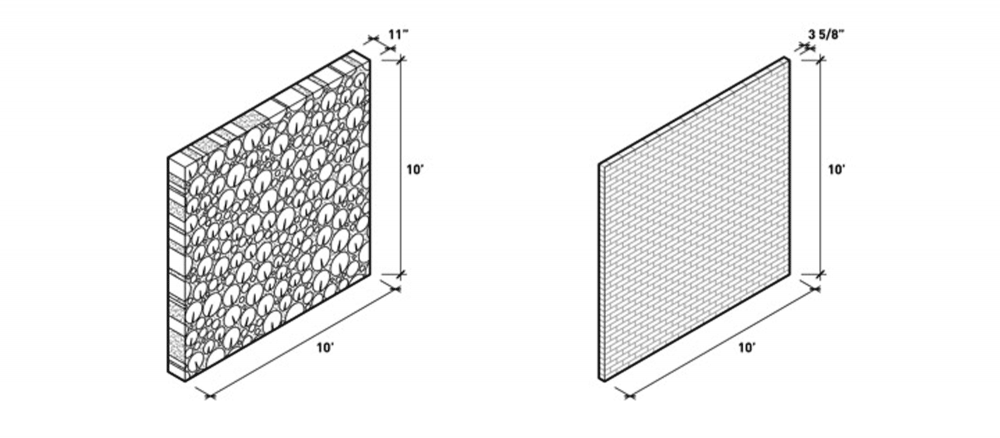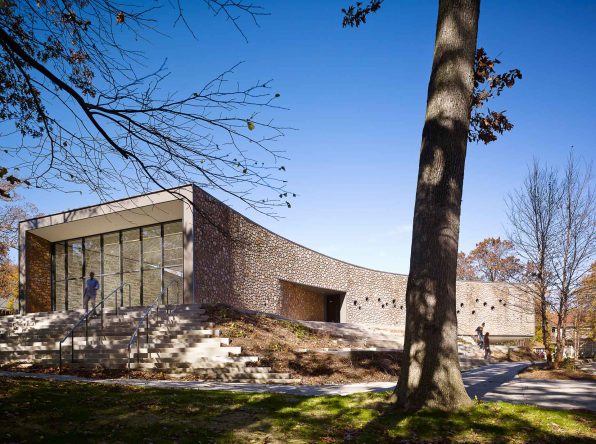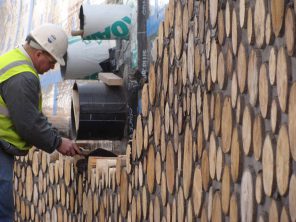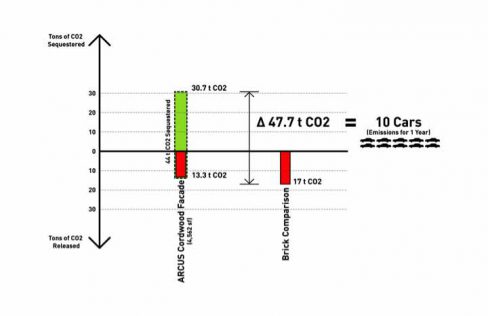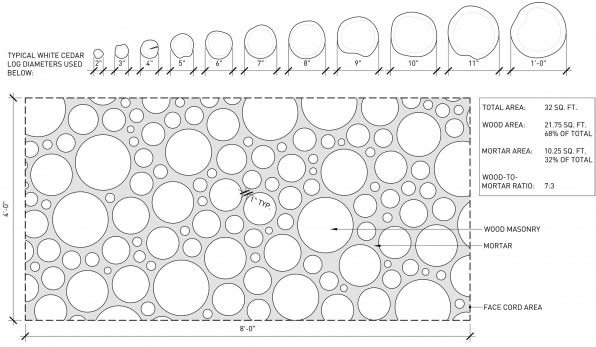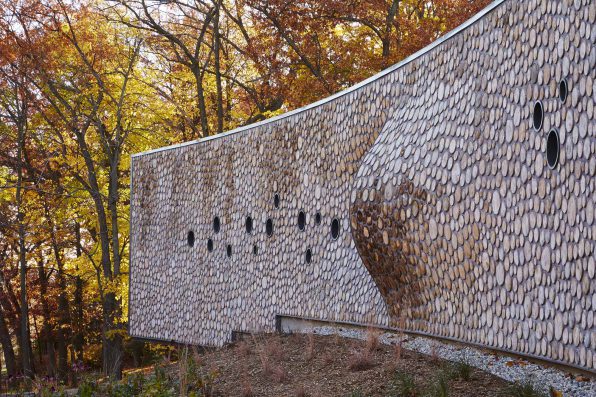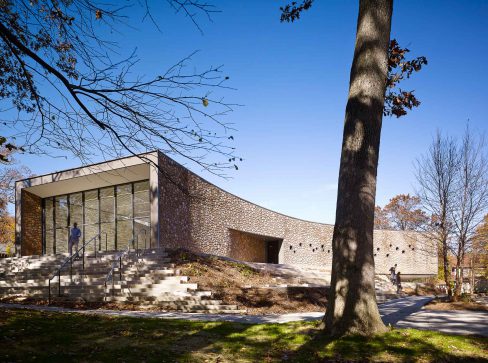Wood vs. Brick Masonry
Wood Masonry
Total Embodied Energy = 1,929 MJ
Total CO2 Released (during fabrication and processing of wood and mortar) = 290.7 Kg CO2
Total CO2 Sequestered = 964.8 Kg CO2
Brick Masonry
Total Embodied Energy = 4,329 MJ
Total CO2 Released (during fabrication of brick and mortar) = 372 Kg CO2
The Arcus Center‘s wood masonry facade revives a highly sustainable heritage technique of construction. In Michigan, wood masonry structures date back at least 100 years, but contemporary masons have little experience with wood. Through consultation with wood masonry experts, hands-on workshops, material testing, and detailed design development, the project became the first institutional application of this technique.
Naturally insect- and rot-resistant Northern White Cedar was locally sourced for the project; it was sorted, cut to length, and allowed to dry for more than a year before construction. Together with rigid and spray foam insulation, the wood masonry provides a very high-performance envelope. Because the wood was grown near the site and required minimal processing and energy expenditure (thus sequestering more carbon dioxide than was emitted in its production), the project’s carbon emissions were significantly lower than traditional brick masonry construction. The delta between a wood masonry and conventional brick facade is equivalent to removing 10 cars from the road for a year.
